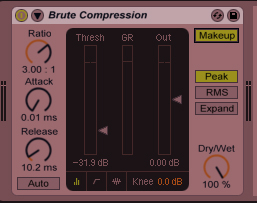A compressor is one of the most powerful processing plugins you can use on your recordings either by an analog hardware device or through a digital plugin. In this article we’ll answer what does a compressor do.
on your recordings either by an analog hardware device or through a digital plugin. In this article we’ll answer what does a compressor do.
Compression literally means to compress or to squeeze something together, and that’s essentially what this plugin does to an audio track.
More specifically, a compressor reduces the dynamic peaks in terms of audio level of a track, or in other words the loudest points of a track or mix are softened so that they are closer to the quieter parts of the track in terms of level.
What Does a Compressor Do?
Compression gives a track a more unified and complete feel which is very important when it comes to a number of different recorded tracks.
This is because most instrumental recordings, whether it’s guitar, bass, or even vocals by their very nature are dynamic. This means there’s a lot of space between the quietest and loudest points in a recording.
While dynamics offer a more exciting listen, too much dynamics in a track can work to its detriment.
Things can be lost or are too loud which is why a compressor is so essential to even everything out and bring those differences closer together for a more complete sound.
So while a compressor turns a track down overall by its very nature, generally the track is then turned back up to correct the volume which was taken out via the compression. This is generally referred to as makeup gain, and many compressors automatically have a setting which by default replaces the gain that was lost during the compression. So the overall net result of using a compressor is turning down the peaks while leaving the quieter sounds untouched, resulting in that more unified signal.
After makeup gain is applied, you get the overall volume matching what it initially did, so the peaks are back at their previous volume but the quietest parts of e track are now louder. This creates a glossier sound overall.
Two more important aspects of the compressor are attack and release. Like with any plugin, this affects how quickly the plugin effects come on and drop off, respectively. More attack on a compressor means it takes longer for the compressor to take effect on the track. Less attack means it comes on right away.
Alternatively, more release means more decay or time the compressor is working. Less release time means it will cut off sooner. You want to make sure you set the attack and release metrics appropriately, otherwise the compressor will sound very artificial and noticeable when generally you want that compressor to blend in seamlessly with the track so that the listener isn’t aware of it.
Now that we’ve answered the question of what does a compressor do, bear in mind that there are a lot of different interesting ways to use a compressor to achieve any number of results, some more subtle than others. A limiter is essentially just a compressor with a very high threshold so gain can be added to the track to easily boost the overall level without affecting the sound or essence of the track negatively.


